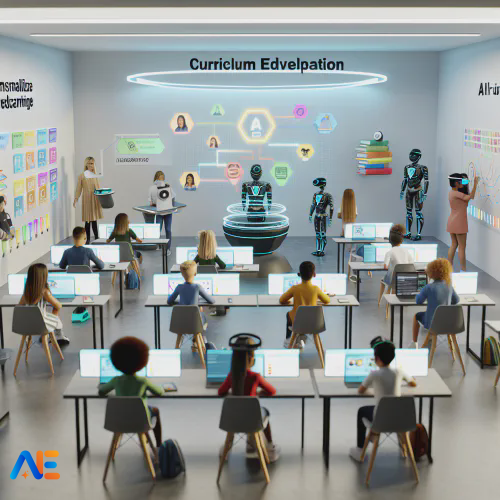
As educators, we are constantly seeking ways to enhance our teaching methods and provide the best possible learning experiences for our students. With the advent of artificial intelligence (AI), we stand on the cusp of a new era in curriculum development—one that promises to streamline lesson planning and open up new avenues for personalised education. In this post, we’ll explore the transformative potential of AI in assisting educators with lesson planning and curriculum design.
AI tools are increasingly sophisticated and can now support teachers in a variety of ways. One of the most significant advantages of AI in education is its ability to suggest resources. Imagine a system that can analyse the content of your lesson and recommend a variety of supplementary materials, such as articles, videos, and interactive activities, that are tailored to your students’ needs and interests. This not only saves time but also enriches the learning experience by integrating diverse and engaging content.
Educational Standards
Another area where AI excels is in aligning lessons with educational standards. Keeping up with state or national standards can be a daunting task for teachers, but AI can automate this process. By inputting the desired standards into an AI system, teachers can receive lesson plans that are not only aligned with these benchmarks but also track student progress against them. This ensures that educators are consistently meeting educational goals and providing a comprehensive learning journey for their students.
Personalised Learning
Interactive content creation is yet another frontier where AI is making strides. Tools powered by AI can help teachers create dynamic presentations, quizzes, and even games that make learning more interactive and enjoyable. These tools often come with easy-to-use interfaces, allowing educators to customise activities without needing advanced technical skills. This kind of content can be particularly effective in catering to different learning styles, whether a student is a visual learner, an auditory learner, or a kinaesthetic learner.
Customisation is key when it comes to teaching, as no two educators—or classrooms—are the same. AI tools are becoming increasingly adaptable, able to mould to different teaching styles and subject matter. For instance, an English teacher might use an AI tool to help students analyse the themes of a novel, while a science teacher might use the same tool to simulate experiments that visualise complex concepts. This level of customisation ensures that AI can be a valuable asset regardless of the subject being taught.
Addressing Concerns
However, with all these advancements, it’s important to address potential concerns. Some educators may worry that AI could depersonalise education or diminish the role of the teacher. It’s crucial to understand that AI is not a replacement for the human touch that is essential to teaching. Instead, it’s a tool to enhance the educator’s role, freeing up time from administrative tasks so that teachers can focus more on the art of teaching—engaging with students, understanding their challenges, and inspiring them to learn.
In conclusion, AI is not just a buzzword in the realm of education; it’s a powerful ally that can transform the way we approach lesson planning and curriculum development. By leveraging AI tools, educators can create more personalised, engaging, and effective learning experiences for their students. As we embrace this new era, it’s exciting to imagine the possibilities that lie ahead for both teachers and learners alike. Let’s continue to explore and integrate these technologies, ensuring that we remain at the forefront of educational innovation.